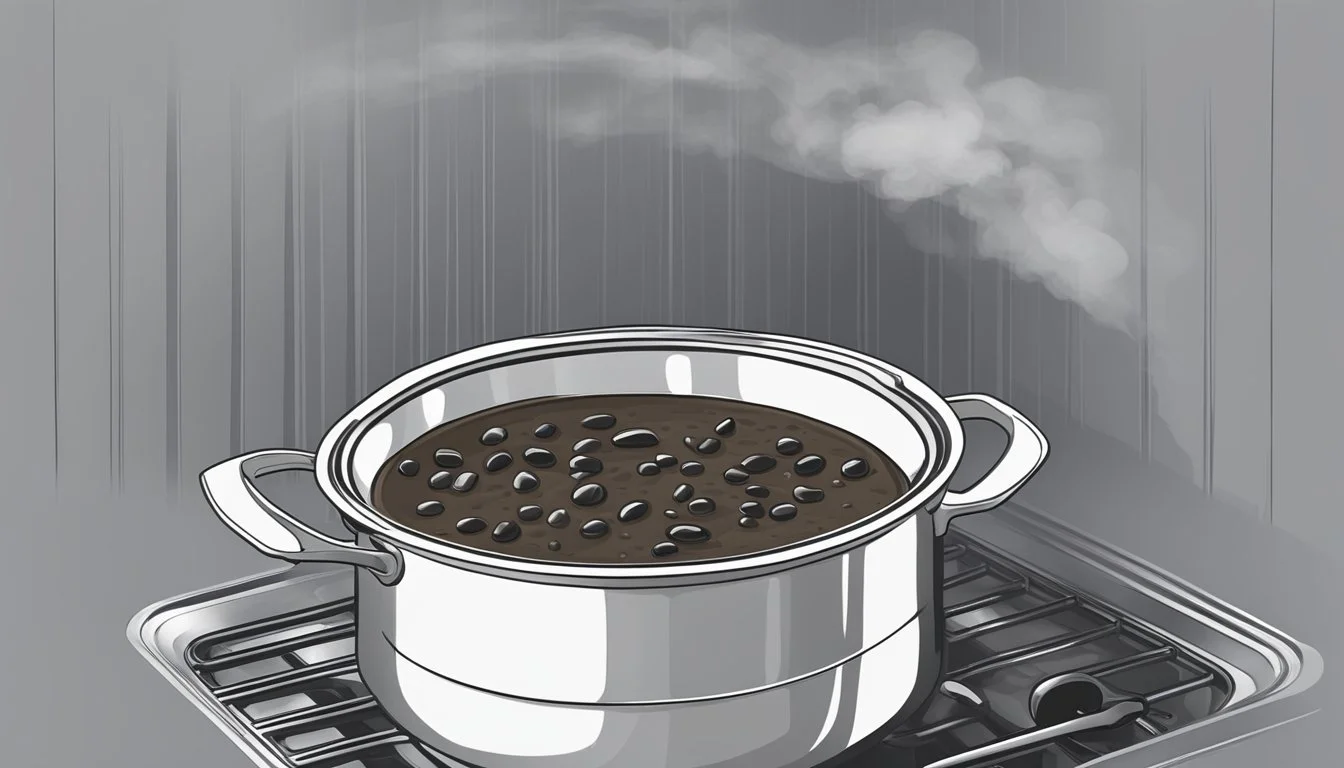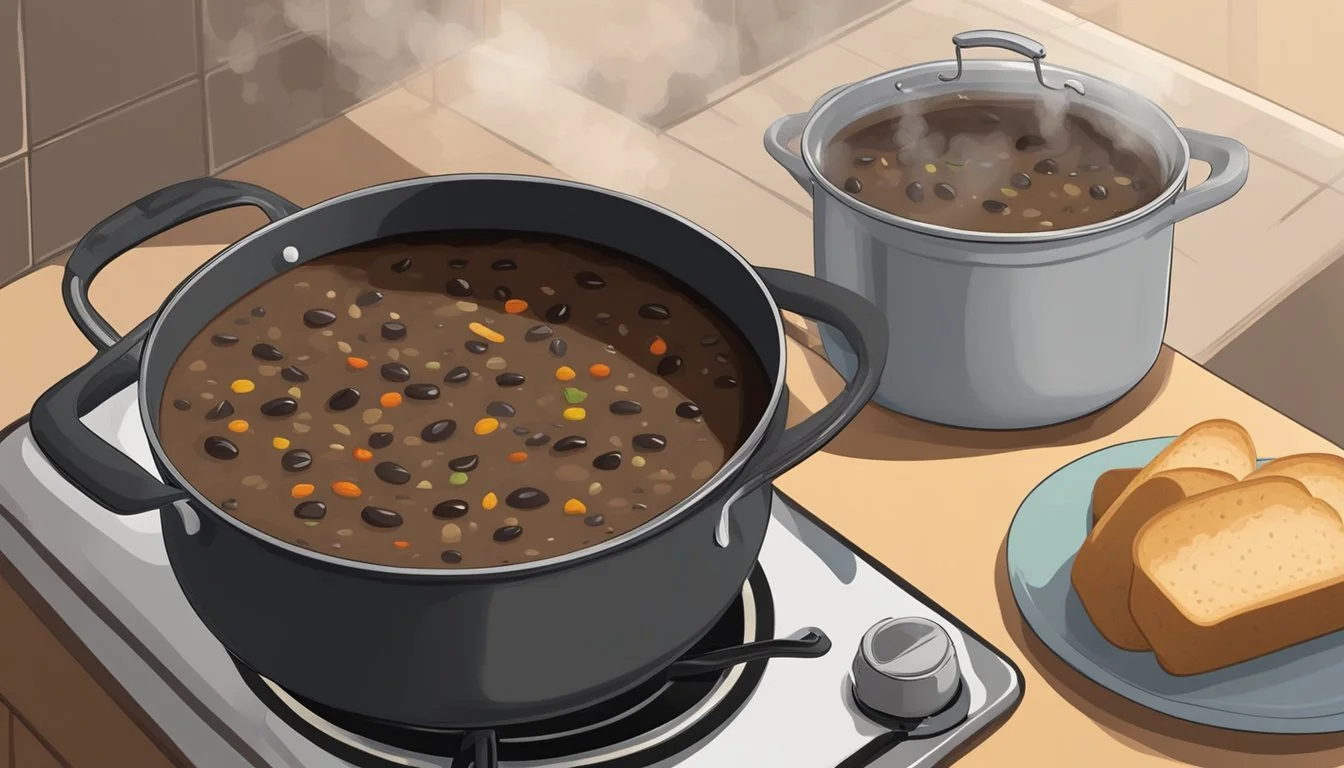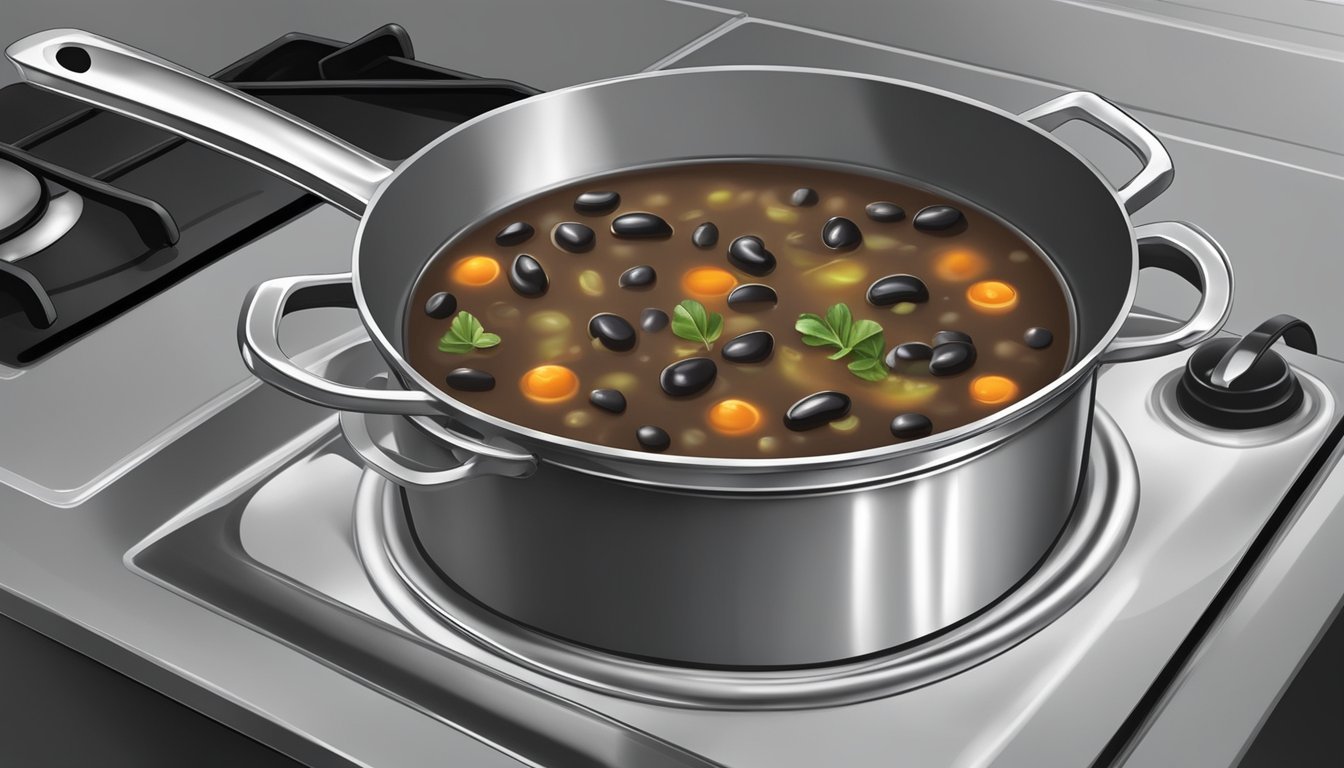How to Reheat Black Bean Soup
Easy Methods and Tips
Reheating black bean soup can be an art, ensuring that the consistency and flavor stay just right. For the best results, reheat black bean soup in a pot over low heat, adding a bit of extra liquid as needed to restore its creamy texture. This method helps to maintain the comforting essence of the dish, balancing the thick, starchy nature of the beans with the savory broth.
Leftovers often become a welcome chance to enjoy the rich, nourishing flavors of homemade black bean soup again. Proper storage is essential: keep the soup in an airtight container in the fridge for up to 4-5 days, or freeze it for longer storage. When freezing, allow room for the soup to expand within its container, and thaw it safely in the refrigerator overnight before reheating.
Whether it's for lunch or dinner, reheating a batch of pre-made black bean soup brings a convenient and satisfying option to the table. By following these simple guidelines, one can savor the delightful consistency and taste that make black bean soup a staple in comfort food cuisine.
Understanding Black Bean Soup
Black bean soup is a nutritious and flavorful dish, often enjoyed by vegans and vegetarians. This section examines the essential components, health benefits, and key characteristics of black bean soup.
Key Ingredients
Black bean soup is built on a foundation of black beans, which provide a hearty texture. Common ingredients include onion, garlic, and carrots that add depth and flavor. Olive oil is used for sautéing these vegetables.
Spices such as cumin, coriander, and oregano enhance the soup with complex, aromatic notes. The liquid base is typically vegetable broth, keeping it vegan and vegetarian-friendly.
Benefits of Black Beans
Black beans are packed with protein and fiber, making them an excellent addition to a balanced diet. They support digestive health and help maintain stable blood sugar levels.
They are naturally vegan, vegetarian, and gluten-free, making them accessible to a wide range of dietary preferences. Regular consumption can contribute to cardiovascular health due to their richness in antioxidants.
Soup Texture and Consistency
The texture of black bean soup is often creamy, achieved by blending part of the beans with other ingredients. This creates a smooth, hearty broth while retaining some whole beans for a varied mouthfeel.
Vegetables such as carrots and onions are typically sautéed until tender before being incorporated into the soup, adding layers of texture. The consistency of the soup can be adjusted by the amount of vegetable broth used or by further blending.
Preparation Before Reheating
Properly storing and preparing black bean soup before reheating ensures the best texture and flavor. When done correctly, this process maintains the soup's quality and nutritional value.
Storing Tips
To retain the soup's freshness, store it in airtight containers in the refrigerator. Black bean soup stays good for up to five days in the fridge. Label each container with the date to keep track of its freshness.
Refrigeration slows bacterial growth, preserving flavor and safety. Always let the soup cool down to room temperature before placing it in the fridge to prevent condensation inside the container, which can affect the soup's texture.
Freezing and Thawing Methods
For long-term storage, freezing is an excellent option. Use freezer-safe containers, and leave some space at the top, as the soup will expand as it freezes. Label the containers with the date and contents.
Freezing: Black bean soup can be stored in the freezer for up to three months.
Thawing: Thaw the soup in the refrigerator for 24 hours before reheating. For a quicker method, submerge the sealed container in cold water, changing the water every 30 minutes to ensure safe thawing.
Optimizing Flavor for Reheat
When reheating, it's essential to restore the soup's original flavor and consistency. Reheat on the stovetop over medium heat, stirring occasionally. Add a bit of water or broth if the soup seems too thick.
Enhance the flavors by adding fresh herbs like oregano or spices such as cumin. Consider sautéing some fresh celery or garlic before adding the thawed soup to the pot. This step brings a fresh depth of flavor that revitalizes the dish, making it taste freshly made.
Reheating Techniques
Reheating black bean soup can be done efficiently using various methods. Each method has its specifics and ensures that the soup retains its rich flavors and textures.
Stovetop Method
The stovetop method is ideal for reheating black bean soup, as it allows for even heat distribution. Begin by transferring the soup to a pot. To prevent scorching, use medium heat and stir frequently. Adding a small amount of water or broth can help maintain the soup's consistency. Monitor the soup closely and continue to stir until it reaches the desired temperature.
Microwave Reheating
Microwave reheating is fast and convenient for those in a hurry. Place the black bean soup in a microwave-safe bowl. Cover the bowl with a microwave-safe lid or plastic wrap, leaving a small vent for steam to escape. Heat the soup on high power for 1-2 minutes, then stir. Continue reheating in 30-second intervals, stirring after each, until the soup is evenly heated.
Oven Reheating
Reheating black bean soup in the oven is less common but effective for large batches. Preheat the oven to 350°F (175°C). Transfer the soup to an oven-safe dish and cover it with aluminum foil to retain moisture. Bake for 20-30 minutes, stirring halfway through. Check the temperature and ensure the soup is heated thoroughly before serving.
Using an Immersion Blender
Sometimes, reheating black bean soup can result in uneven texture. Using an immersion blender can help. After reheating the soup using any method above, blend the soup for a few seconds to smooth out the consistency. This is especially useful if the soup has thickened significantly during storage. Ensure the soup is at the right temperature before serving.
Adjustments and Additions
To enhance reheated black bean soup, consider seasoning it afresh, increasing its creaminess, or adding ingredients to make it chunkier. These modifications not only elevate the flavor but also customize the soup to personal preferences.
Seasoning After Reheating
Once the soup is reheated, it's essential to adjust the seasoning. Often, flavors can diminish when stored.
Adding salt can reinvigorate the soup's depth. For those who enjoy a bit of heat, red pepper flakes or fresh jalapeño can add a spicy kick. Incorporating lime juice can brighten the flavors, while freshly ground black pepper can provide a subtle bite. Consider garnishing with chopped cilantro for a fresh touch to balance the other spices.
Enhancing Creaminess
For a creamier texture, several options are available.
If the soup is vegan, blending a portion of the soup can create a thicker, creamier consistency without dairy. Another vegan option is adding mashed avocado, which contributes to both creaminess and flavor. If dairy is acceptable, stirring in a spoonful of sour cream or Greek yogurt can significantly increase the richness. Each of these methods can transform the texture and mouthfeel of the soup.
Making Soup Chunkier
To add more substance to the soup, incorporating extra ingredients is a simple solution.
Adding chopped vegetables like bell peppers, carrots, and onions can enhance both texture and flavor. If preferred, the vegetables can be sautéed first to bring out their natural sweetness before being added to the soup. Other chunky additions include whole black beans or corn, providing more bite. These adjustments ensure the soup becomes a heartier, more satisfying meal.
Serving and Accompaniments
Black bean soup pairs wonderfully with a variety of side dishes and toppings, offering flexibility to suit diverse palates, including vegans and vegetarians.
Suitable Side Dishes
Black bean soup goes well with cilantro lime rice, which adds a fresh and zesty flavor. Tortilla chips are perfect for dipping and provide a delightful crunch. For a heartier option, consider cheesy beef quesadillas or grilled avocado.
A refreshing bell pepper salad can balance the soup's richness. Southern cornbread and chimichurri garlic bread also make excellent accompaniments, offering both texture and flavor contrasts.
Topping Ideas
Enhance the soup with a variety of toppings. Avocado slices add creaminess, while tortilla strips provide crunch. Fresh pico de gallo can introduce a burst of freshness and acidity. For additional flavor, sprinkle chopped cilantro over the soup.
Other garnishes such as sour cream or dairy-free alternatives for vegans, shredded cheese, and a squeeze of lime juice can elevate the dish.
Serving Vegan and Vegetarian Guests
When serving vegans and vegetarians, focus on plant-based accompaniments. Cilantro lime rice and tortilla chips are excellent choices. Sweet corn can lighten the meal, and a bell pepper salad adds a fresh component.
Ensure toppings like avocado and pico de gallo are readily available. For vegan toppings, use dairy-free cheese and sour cream. These options ensure everyone can enjoy a satisfying and inclusive meal.
Health Considerations
When reheating black bean soup, it’s crucial to consider various health aspects, particularly concerning dietary restrictions and potential allergen content. This ensures that the soup remains safe and healthy for all to enjoy.
Dietary Restrictions
Black bean soup is naturally vegan and gluten-free, making it suitable for those following plant-based diets and individuals with gluten intolerance. To maintain this, ensure that any added ingredients—such as broths or seasonings—are also free from animal products and gluten.
For those who are dairy-free, it's important to avoid adding any dairy-based toppings or mix-ins. Opt for plant-based alternatives like coconut yogurt or nutritional yeast if a creamy texture is desired.
Black bean soup is also rich in fiber and protein, making it an excellent choice for individuals looking to improve their digestive health and maintain muscle mass. These attributes are beneficial for both general health and specific dietary needs.
Allergies and Sensitivities
Individuals with sensitivities or allergies must be cautious about cross-contamination during preparation and reheating. If there are any concerns with legumes, using alternative ingredients, such as lentils, could be considered.
When reheating, use clean utensils and cookware to prevent contamination from allergens. This practice is vital, especially in shared kitchens.
Some recipes may include spices or additives that could trigger sensitivities. Always check ingredient lists and reduce or substitute potential allergens. Maintaining clear labeling and communication regarding ingredient content can help prevent accidental exposure to allergens. This ensures that everyone can enjoy the soup without adverse effects.








